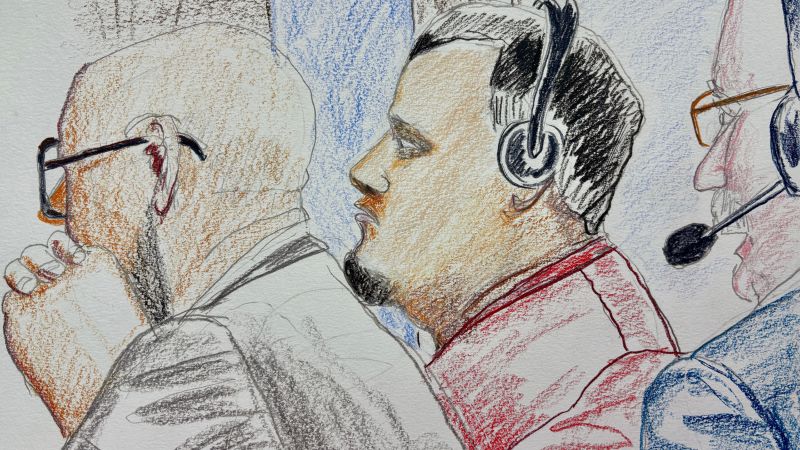Kilmar Abrego Garcia’s case has garnered significant attention, serving as a potent example for discussions around immigration policy and the legal ramifications of human smuggling. His journey has been fraught with legal hurdles after he was mistakenly deported to El Salvador and subsequently returned to the U.S. to face charges. The Trump administration has highlighted his deportation as emblematic of the perceived dangers posed by undocumented immigrants in the country, fueling the ongoing debate regarding immigration enforcement.
Amidst the political and judicial tensions surrounding his case, the Justice Department’s arguments against Abrego Garcia have come under intense scrutiny. In Tennessee, a federal magistrate judge expressed skepticism about whether the evidence presented truly justified keeping him incarcerated while awaiting trial. Abrego Garcia has pleaded not guilty to allegations of transporting undocumented individuals from Texas to Maryland—a serious charge that has drawn the focus of federal prosecutors.
During a six-hour hearing, the prosecution attempted to paint Abrego Garcia as a dangerous player within a human smuggling ring. They introduced evidence and testimony from a Homeland Security special agent regarding a 2022 traffic stop that uncovered several undocumented passengers in an SUV. However, the defense team raised significant questions regarding the credibility and reliability of this evidence, leading to doubts about its validity in establishing a concrete case against him.
Acting U.S. Attorney Robert McGuire raised concerns about Abrego Garcia’s potential threat to the community, citing an incident involving a minor passenger who may not have been properly secured with a seatbelt during transport. He also referenced domestic violence allegations against Abrego Garcia, which his wife had reportedly made. McGuire’s assertions emphasized the government’s aim to demonstrate a tough stance on immigration violations and recover from embarrassment over the previous deportation error.
The legal discourse flowed back and forth, as the prosecution feared that Abrego Garcia might flee due to his newfound notoriety. Yet, Magistrate Judge Barbara Holmes framed this concern as largely theoretical, suggesting that his continued detention in immigration custody would likely keep him within the system anyway, regardless of the outcome of the criminal proceedings.
In a critical assessment of the evidence, legal analysts noted that while a grand jury had indicted Abrego Garcia, the defense had identified substantial grounds for cross-examination that could bring the strength of the prosecution’s claims into question. The key evidence comprised video footage from the traffic stop and police body camera recordings, revealing a chaotic scene in which multiple undocumented individuals were found in the SUV he was driving—a vehicle linked to a convicted smuggler.
The hearing highlighted the questionable origins of some of the evidence, particularly the names and birthdates provided by passengers on that day. The defense argued the reliability of such testimonies was inherently flawed, noting that undocumented individuals might hesitate to disclose accurate information to law enforcement out of fear of repercussions.
Several factors within the testimony also raised eyebrows. The prosecution relied on witness accounts and statements from individuals with dubious legality or motivations, which further complicated the integrity of the evidence. Two of the cooperators involved had criminal backgrounds and were in precarious immigration situations, suggesting they might have incentives to provide testimony that favored the government in exchange for leniency.
As Abrego Garcia’s defense scrutinized the claims of cooperators, they highlighted inconsistencies in their stories and the implausibility of the allegations related to frequent trips made by him under precarious conditions with children in tow. The defense raised pointed questions regarding the general reliability of hearsay evidence, arguing that much of the claims against Abrego Garcia stemmed from unverified statements and assumptions rather than hard facts.
The political implications of Abrego Garcia’s case also became apparent, with legal experts arguing that it may have received unwarranted public attention largely due to political motivations. The fact that Attorney General Pam Bondi showcased the indictment in a press conference illustrated a potential desire to use the case as a platform for political discourse, rather than focusing solely on the merits of the evidence.
While both McGuire and Bondi articulated concerns about the risks posed by individuals involved in human smuggling, the prosecution’s inability to substantiate specific threats posed by Abrego Garcia during the hearing raised critical questions about the validity of such claims. Ultimately, as the legal proceedings continue, the spotlight on Abrego Garcia’s case invites rigorous scrutiny of the intersection of immigration law, political agendas, and criminal justice. The outcome of these charges may significantly impact the ongoing debate around immigration enforcement in the United States.



